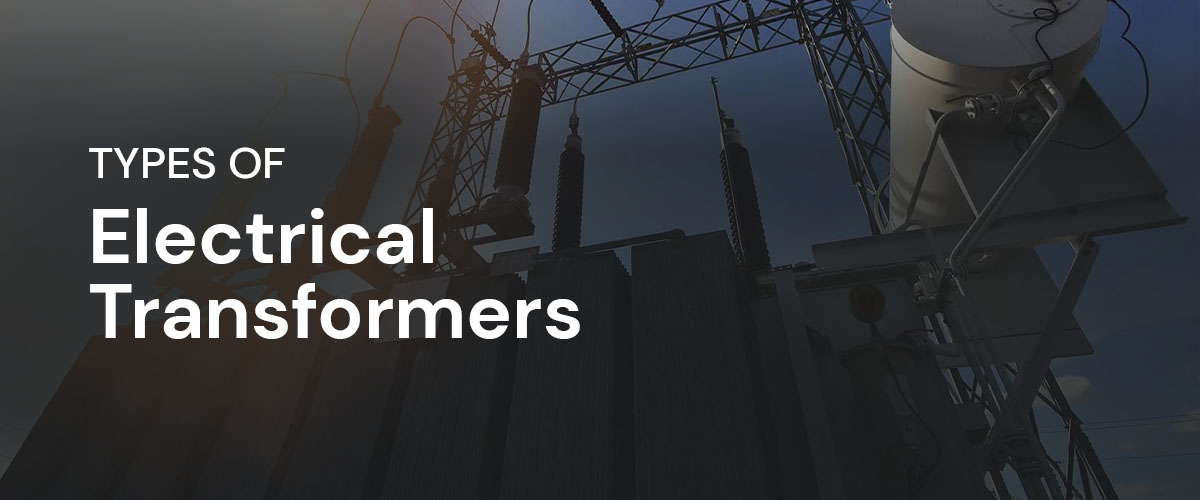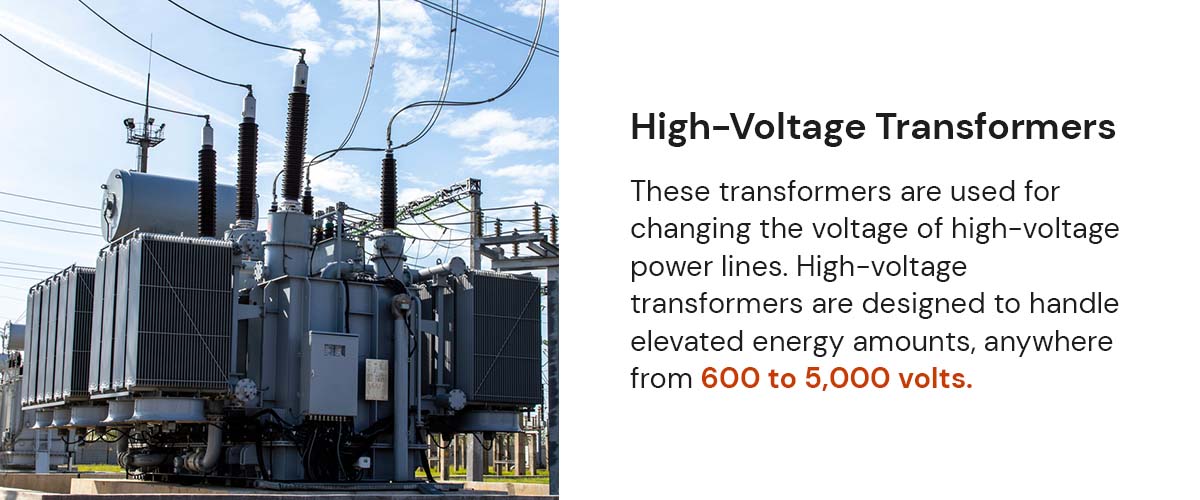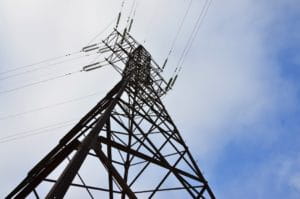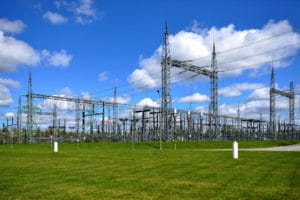
Electrical transformers are essential for converting electrical currents into voltage. They expertly store and transport energy, improving power movement for consumers and industrial applications in the safest and most efficient way. Different transformers solve unique electrical problems, creating a more efficiently-powered system.
Let’s look at the different electrical transformers available for electrical transportation.
How Many Types of Electrical Transformers Are There?
Transformers can be categorized by different classifications based on a transformer’s purpose, voltage conversion, windings and more. All transformers use Faraday’s Law in some capacity, but their exact construction and purpose differ slightly. Each type of transformer is constructed to fulfill a specific energy service, allowing a variety of products and services to operate safely and effectively.
Below, we look at 12 types of transformers and break down what sets them apart from the other transformers on the list.
1. Isolation Transformers
Isolation transformers isolate a circuit or device from the main power supply. Technically, most transformers can be classified as isolation transformers — all transformers use induction to convert electricity instead of a conductor.
What separates isolation transformers is the separation from the power source. These transformers transfer electricity from an alternating current source while isolating the device from the power source for improved safety.
Isolation transformers have many applications — they’re used in measurement and test systems, robotics, audio systems, avionics, uninterrupted power supplies, medical electronics, motor controls, data communications, light fixtures and industrial control panels.
2. Step-Up Transformers
Step-up transformers can convert lower voltages to higher voltages, “stepping up” these voltages to facilitate long-distance travel without power loss. Additionally, these transformers reduce amperage and resistance effects as they increase the voltage, making transporting energy safer.
Step-up transformers work by having electrical energy travel through two coil phases. The secondary coil has more windings than the primary, increasing the voltage. A special core helps keep the no-load losses down. This safe voltage increase means step-up transformers are common for power transformation and modification — many generating stations use them before sending power out.

3. High-Voltage Transformers
These transformers are used for changing the voltage of high-voltage power lines. High-voltage transformers are designed to handle elevated energy amounts, anywhere from 600 to 5,000 volts. Custom high-voltage transformers are also used for special, high-voltage needs.
These transformers are a type of instrument transformer — they’re often used for protection and metering in high-voltage circuits, and they have scientific and industrial applications. Their constructed to withstand rougher conditions and are highly efficient.
4. Toroidal Transformers
Toroidal transformers are small devices meant for electronic circuit boards. They have a donut-shaped ferromagnetic core wound with wire. This unique shape prevents induction leakage, leading to high induction for devices that use these transformers.
This transformer weighs less than others with similar ratings, making it ideal for small, portable devices. Its two coils are wound around the donut core — this slow-winding process makes these transformers somewhat expensive for their size.
Some devices that use toroidal transformers include inverters, televisions, radios, power supplies and amplifiers.
5. Pulse Transformers
Unlike isolation transformers, pulse transformers operate in direct current mode. These transformers are enhanced, producing electrical pulses with constant amplitude and great velocity.
In smaller transformers, electrical pulses transmit digital information — particle acceleration, camera flashes and radar equipment all use pulse transformers. Medium-sized pulse transformers perform well in electronic circuit applications.
6. Current Transformers
Current transformers measure the current or flow of electricity in a device, mainly in electrical transmission lines. They measure and control the amount of electricity coming into the circuit to protect electronic devices from receiving too high of an electrical current.
7. Low-Voltage Transformers
Low-voltage transformers are a type of power transformer used for changing a low-voltage electrical line’s voltage capacity. They convert higher voltages into lower voltages. Different models have other efficiencies and come in various sizes — some low-voltage transformers are small enough to pinch between your fingers.
8. Automatic Transformers
Also called autotransformers, automatic transformers have only one winding. This feature makes them highly cost-effective and much more efficient than other transformers with the same volt-ampere rating.
An automatic transformer’s single winding acts as the primary and secondary, meaning it needs fewer copper conductors. Automatic transformers’ construction makes them lighter, smaller and less expensive than other transformers.
9. Zig-Zag Transformers
These are special-purpose transformers with a star or zig-zag winding connection. They can derive reference points for ungrounded systems, providing a neutral point. Zig-zag transformers have a primary winding but no secondary winding.
Instead, each arm of the zig-zag winding is split into two halves wound in opposite directions with an equal number of turns. Three separate cores are wrapped in six total coils. Their construction and application make them useful in many industries, including hardware, power distribution, automotive, industrial, petrochemical and electronics.
10. Three-Phase Transformers
This is a type of polyphase transformer. Three sets of primary and secondary windings are wound around one part of an iron core. They often use delta configurations for their windings.
Three-phase transformers are essential for managing a three-phase electricity transmission system. They direct and transform electrical currents away from power lines and into businesses and homes.
11. Instrument Transformers
These transformers isolate voltage and main power, converting them to a smaller ratio. Either current transformation or voltage transformation, an instrument transformer steps down voltages and currents so they’re at levels that can safely operate components like protection devices.
On a commercial scale, designing multiple instruments that can all work safely at the varying voltage requirements of power, distribution and transmission networks is impossible, which is where instrument transformers can help.
12. Distribution Transformers
Also called step-down transformers, distribution transformers convert higher voltages to lower voltages. In this transformer, the primary coil has more windings than the secondary, putting out a lower voltage than it comes in.
These transformers are often used for fulfilling load center or consumer voltage requirements. Distribution transformers are commonly used for power adaptors, welding machines and power transmission lines.
They perform the opposite function of a step-up transformer, so they’re often at the opposite end of a power transmission system from step-up transformers.

Looking to Buy, Rent or Sell an Electrical Transformer? Contact Sunbelt Solomon
Sunbelt Solomon delivers high-quality, complete transformer solutions for a variety of industrial, utility and commercial applications. Our comprehensive transformer services ensure our customers have the power and additional support necessary for their operations. With over 100 years of combined experience, you can trust Sunbelt Solomon to provide safe, effective solutions for your transformer needs.
If you’re interested in transformer rental, repair or replacement or additional transformer products, contact our team today. Explore our custom quote builder tool and get an estimate for your transformer services.






